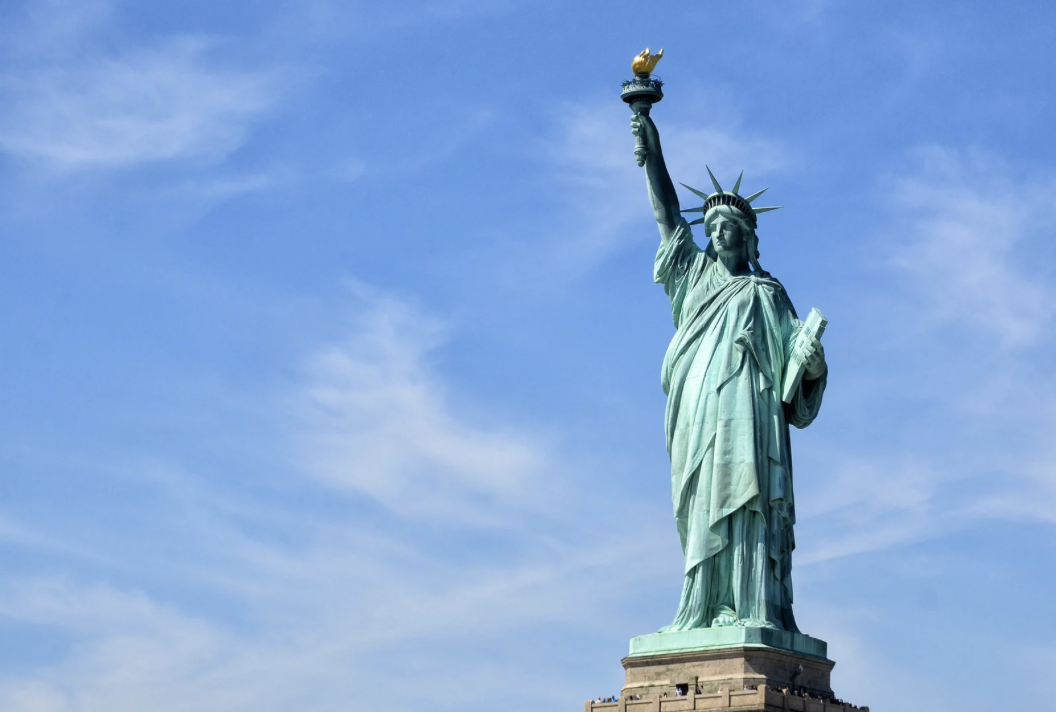“Oui, mais … Yes, but … we had it first!”
It’s a phrase that playfully nods to the classic Parisian belief that all roads lead to Paris. And in the case of the Statue of Liberty—one of the most iconic landmarks in the United States—they may be right.
The subject recently came to mind while 56Paris Real Estate was listing a property in Paris’ 17th arrondissement—on the very street where the Statue of Liberty was crafted in the 19th century. This remarkable connection, along with current headlines, inspired us to take a closer look at this enduring symbol of the Free World.
The Statue of Liberty Was Made in Paris
Today, the Statue of Liberty stands as one of the United States’ most-revered landmarks, greeting millions of visitors and new immigrants alike in New York Harbor. But this towering beacon of freedom and democracy was designed, engineered, and built right here in Paris.
Its story is one of artistic vision, technological innovation, and cross-continental collaboration. And yes—even crowdfunding played a part.
A Gift from France to America
The idea originated in 1865 with Édouard René de Laboulaye, a French jurist and abolitionist, who proposed a monument to honor American independence.
Legend says it began as dinner-party conversation. Yet sculptor Frédéric Auguste Bartholdi—born in Colmar, Alsace—took the idea seriously and began shaping it into reality.
By 1870, Bartholdi started designing “Liberty Enlightening the World,” commemorating America’s 100th anniversary and celebrating the shared democratic ideals of the U.S. and France. It also served as a tribute to France’s support of American independence during the Revolutionary War.
Building Liberty: A Binational Effort
The plan? Divide and conquer.
France would fund and build the statue. The people of the United States would finance the pedestal upon which it would stand.
Bartholdi enlisted Gustave Eiffel—yes, that Eiffel—to engineer the statue’s iron framework. Eiffel’s design created a perfect marriage between artistic vision and structural innovation.
Statue at the Musée des Arts et Métiers - Statue on the Pont de Grenelle - Statue in the Luxembourg Gardens
Craftsmanship in Paris
Constructed in Paris between 1881 and 1884, the statue came to life at the metalworking firm Gaget, Gauthier & Compagnie.
Eiffel used the repoussé technique—hammering copper sheets by hand over a wooden frame—allowing the massive figure to remain lightweight yet resilient. It was one of the greatest technical feats of the 19th century.
Curious Parisians could visit the workshop to observe progress. Miniatures were sold, and pieces like the torch and head toured France and the U.S., fueling public interest.
Crowdfunding the Pedestal in the U.S.
On the American side, fundraising fell short. Congress and state governments declined support.
It was publisher Joseph Pulitzer who sparked public momentum. Through his newspaper The New York World, he called on citizens to contribute—printing the name of every donor.
Within six months, the goal was reached. Most donations came from ordinary citizens, proving this monument belonged to the people.
A Grand Arrival in New York Harbor
The completed statue shipped from Paris aboard the Isère in 1885. After the pedestal was finished on Bedloe’s Island (now Liberty Island), Lady Liberty was reassembled and unveiled in 1886.
Bartholdi attended the ceremony and declared: “My dream has been realized... This thing will live to eternity.”
A Little Liberty in Paris
You don’t have to cross the Atlantic to see Lady Liberty. Paris hosts several replicas:
• The quarter-scale version on Île aux Cygnes, near Pont de Grenelle
• Models in the Musée d'Orsay and Musée des Arts et Métiers
• A miniature in Luxembourg Garden
• And a hidden one inside the bronze Centaur statue at Place Michel Debré
Each replica is a reminder of Paris’ role in shaping an icon of global freedom.
A hidden miniature Statue of Liberty on Place Michel Debré - Statue of Liberty on Île aux Cygnes - Construction of the Statue of Liberty on Rue de Chazelles painting by Victor Dargaud
Final Thoughts: A Lasting Symbol of Liberty
The Statue of Liberty remains a powerful representation of freedom, international friendship, and cultural exchange. Its Parisian origins remind us how deep and long-lasting the bonds between France and the United States truly are.
At 56Paris Real Estate, the Statue of Liberty is more than a historic monument—it’s a powerful symbol of the enduring friendship between France and the United States. As an international real estate agency with a predominantly American clientele, we see this connection reflected in our daily work. It embodies a shared commitment to freedom, fairness, and cultural exchange.
This spirit of mutual respect and openness is not only a cornerstone of our professional values—it’s a key to building lasting relationships and creating a sense of home across borders.
Looking for a home with history and heart?
Please don’t hesitate to contact us. We’re happy to connect.
And follow us on Facebook, Instagram, YouTube, and Pinterest for more stories and insights from the world of Paris real estate.
